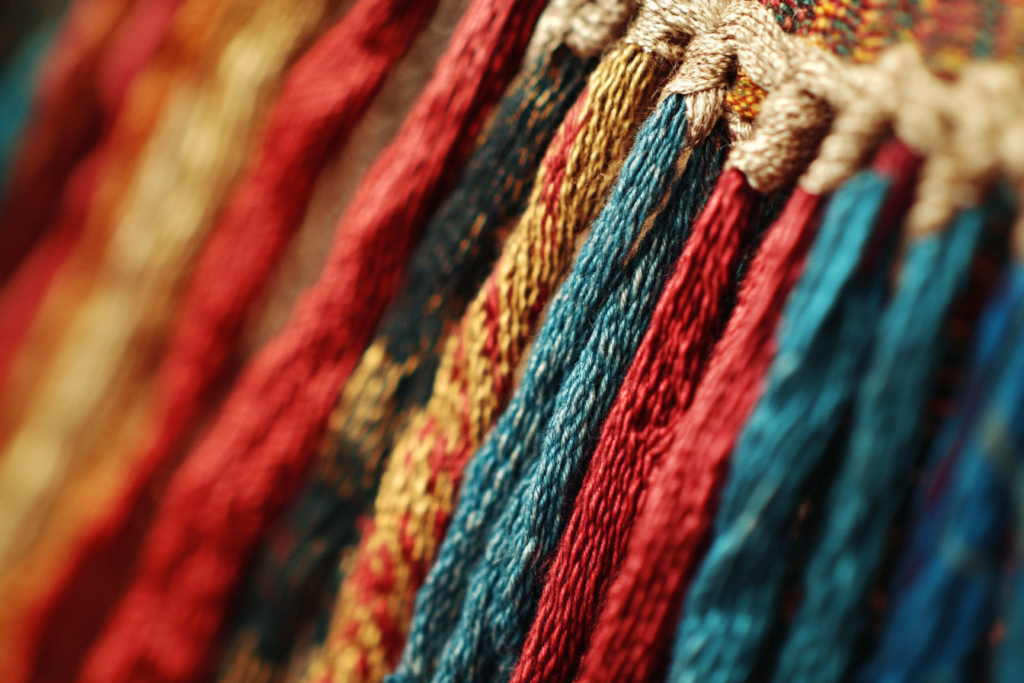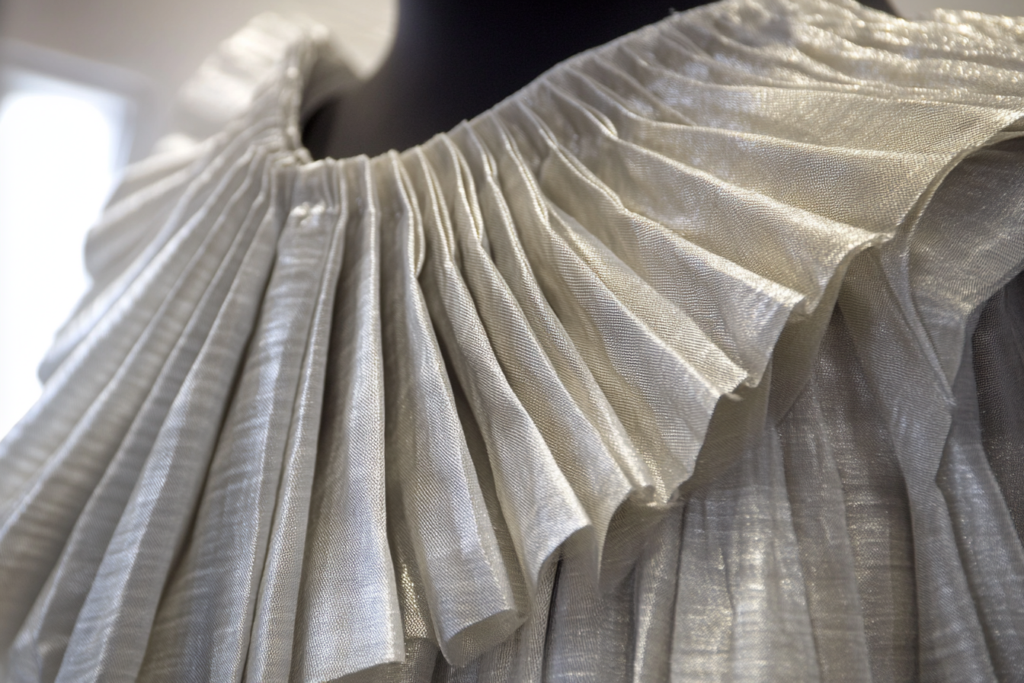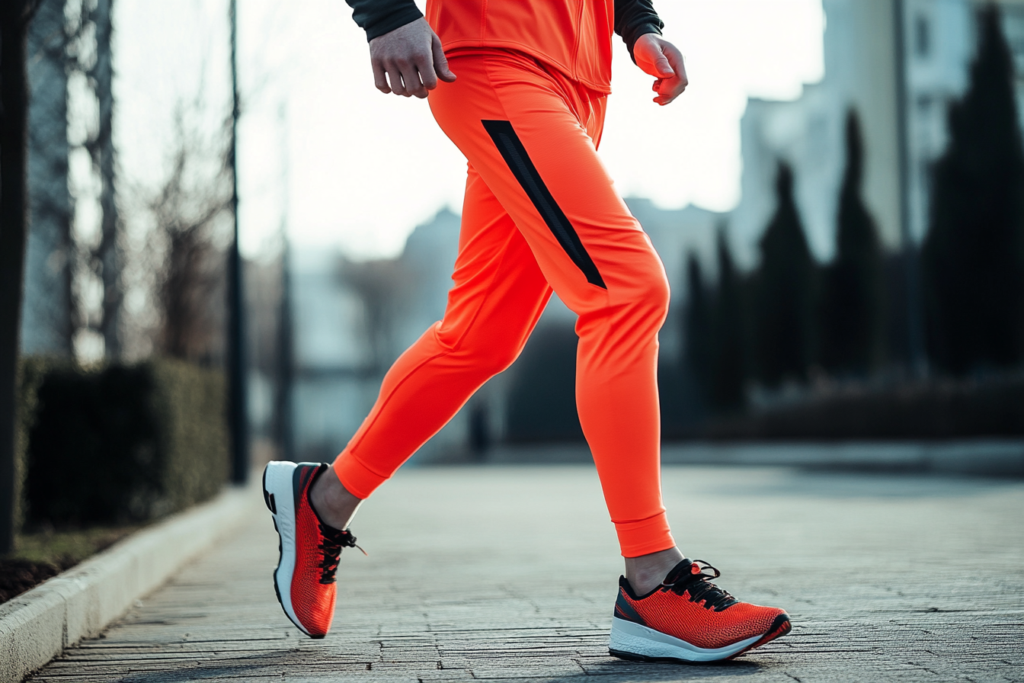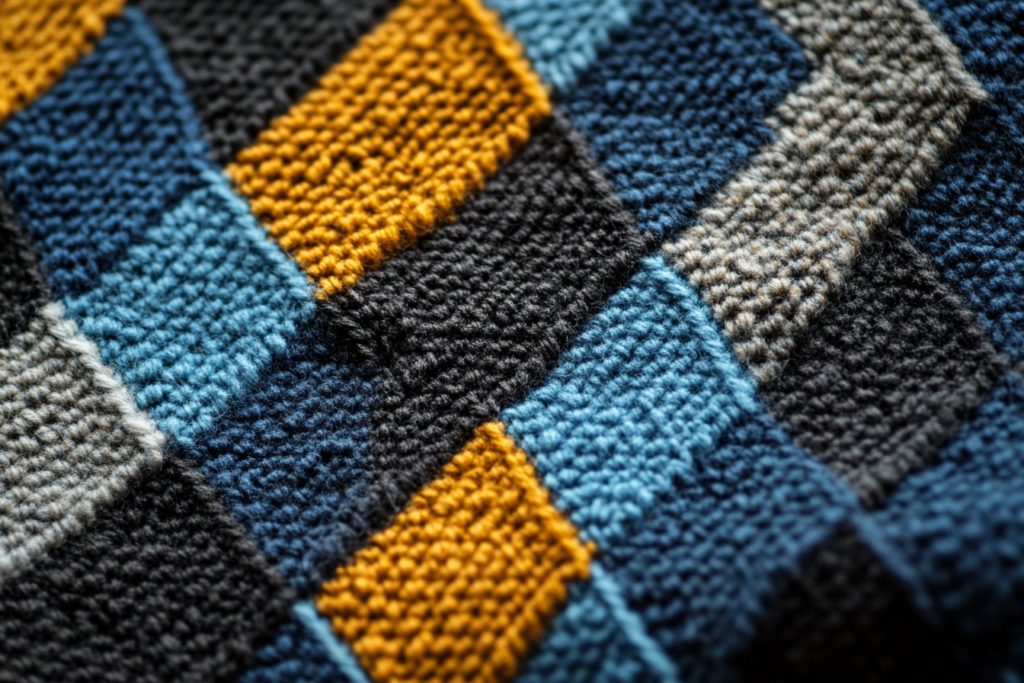Yarn Torqued: Understanding Twisted Threads in Woven Fabrics
Meta Description: Yarn torqued refers to twisted threads in woven fabric, where the fibers are tilted as they crisscross from the edges. Learn how yarn torque affects fabric texture and structure.
What is Yarn Torqued?
Yarn torqued refers to the twisting or tilting of the fibers or threads in a woven fabric. This phenomenon occurs during the weaving process when the threads are not aligned perfectly and are twisted, causing the yarns to tilt or skew. The term “torqued” describes the twist that happens when the crisscrossing yarns are angled from the edges, causing a distortion in the fabric structure.
This twisting effect is a natural occurrence in many woven fabrics and can significantly affect the texture, appearance, and structural integrity of the fabric. In some cases, yarn torque is a desired characteristic, giving the fabric a unique appearance and feel, while in other cases, it may be something that needs to be corrected in the production process.


Why Does Yarn Torquing Occur?
Yarn torquing usually occurs due to a misalignment of threads during the weaving process. The common reasons for yarn torque include:
1. Uneven Tension in the Warp and Weft
- If the threads are pulled at different tensions during the weaving process, the yarns may not align perfectly. This causes the yarns to twist as they are woven, resulting in the fabric being skewed or distorted.
2. Improper Weaving Setup
- Sometimes, issues with the loom setup can lead to inconsistencies in the placement of threads. This can result in the fabric having torqued yarns, where the threads are woven at an angle, causing a diagonal pull across the fabric.
3. Fiber Properties
- The type of fiber used can also contribute to yarn torque. For example, synthetic fibers are often more prone to twisting or skewing compared to natural fibers. The structure of the yarn itself can lead to uneven tension, creating a torqued effect.
4. Fabric Weight and Structure
- Heavier fabrics or denser weaves may be more likely to experience yarn torque, especially if the threads are not balanced in terms of tension and alignment during weaving.
How Does Yarn Torquing Affect Fabric?
1. Fabric Skewing
- Yarn torquing causes the fabric to be skewed, meaning that the threads become tilted from their usual perpendicular arrangement. This can affect the fabric’s symmetry, leading to uneven edges or a diagonal pattern running through the fabric.
2. Distortion of the Weave
- The weave structure may appear distorted due to the twisting of the yarns. This can affect the overall look of the fabric, making it appear less smooth or consistent.
3. Impact on Finished Garments
- When fabric with yarn torque is used in garment construction, it can cause issues like misaligned seams or uneven hems, leading to a poor fit or unpredictable drape. Garments made from torqued fabric may have visible distortions that affect their appearance.
4. Reduced Durability
- Torqued yarns can lead to weak spots in the fabric. Because the fibers are twisted out of their normal alignment, this can make the fabric more prone to wear or damage.
How to Correct Yarn Torquing
📌 Adjusting Loom Tension
- One of the best ways to correct yarn torquing is by ensuring that the tension of the warp and weft threads is balanced during the weaving process. Proper adjustment of the loom can help maintain the alignment of the threads and prevent the fabric from skewing.
📌 Careful Thread Alignment
- Ensuring that the threads are properly aligned before weaving begins can help reduce yarn torque. It is essential to make sure that the threads are evenly distributed across the loom to avoid uneven tension during the weaving process.
📌 Fiber Selection
- Choosing fibers with more stable properties can help reduce yarn torque. For example, natural fibers like cotton and linen may be less prone to skewing compared to certain synthetic fibers.
📌 Post-Weaving Treatments
- In some cases, fabric that has experienced yarn torquing can be treated post-weaving. Heat-setting or blocking the fabric can sometimes help to restore the threads to their proper alignment and reduce the effects of the torque.
How to Identify Yarn Torquing in Fabric
It’s essential to be able to recognize when yarn torque is affecting your fabric. Here are some signs of yarn torquing:
📍 Diagonal Skewing
- Look for areas where the fabric appears diagonally distorted or misaligned. The threads may be visibly angled, which can be a sign of yarn torque.
📍 Uneven Fabric Edge
- If the fabric has a wavy edge or if the selvedge is not aligned correctly, it could indicate that the yarns have been torqued.
📍 Distorted Pattern
- If the fabric has a pattern, such as a grid or checkered design, look for any distortions or areas where the pattern doesn’t line up properly. This could be caused by yarn torque.
Illustration of Yarn Torquing
Here is an illustration showing yarn torquing in a woven fabric. The image highlights how the yarns in the fabric are twisted and angled, creating a skewed appearance across the fabric.

Conclusion: Understanding Yarn Torquing in Fabric
Yarn torquing is a common phenomenon in woven fabrics where the yarns are twisted as they cross over one another, leading to a skewed or distorted fabric appearance. While yarn torque can create interesting visual effects, it can also pose challenges in garment construction, leading to uneven seams and fabric distortion. Understanding how yarn torque occurs and how to address it through adjustments in the weaving process or fabric treatment can help ensure that the final product has the desired structure, fit, and appearance.



